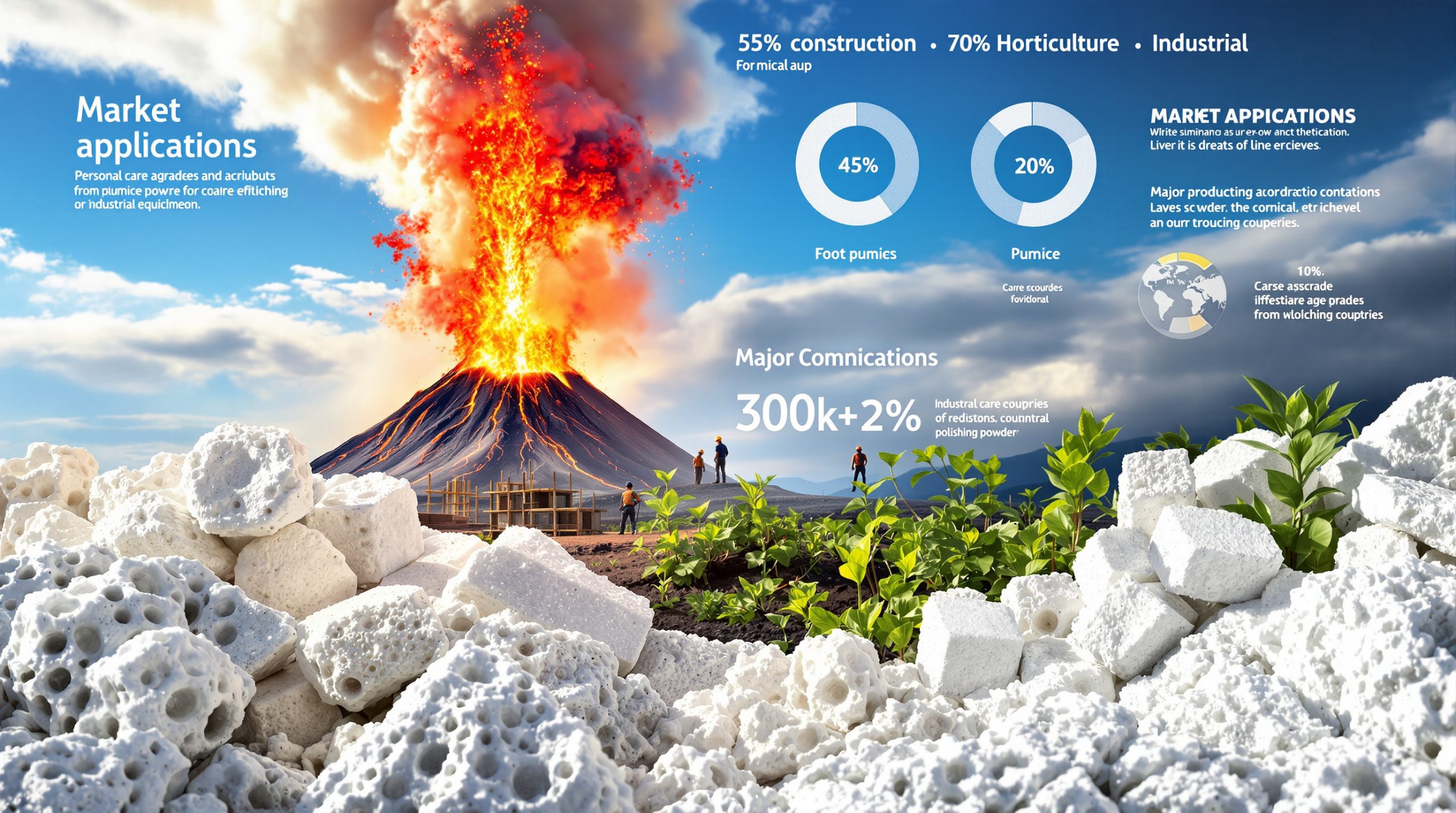Zambia's Copper Production Investment: Driving Growth in a Red-Hot Market
Zambia's copper sector is experiencing a remarkable resurgence, with unprecedented investment flowing into the country as global copper price predictions surge and supply constraints tighten worldwide. This strategic push to expand production comes at a critical time when surging copper demand is accelerating due to global electrification trends and energy transition requirements.
The Scale of Zambia's Copper Ambitions
Zambia has set an ambitious target to triple its copper production to 3 million tons annually by the early 2030s—a goal that would cement its position as one of the world's premier copper producers. According to the Zambian Ministry of Mines and Minerals Development, this expansion is backed by approximately $10 billion in committed investments from major mining companies seeking to capitalize on Zambia's rich copper deposits.
The country is on track to achieve record production in 2025, potentially exceeding 1 million tons for the first time in its century-long commercial mining history. This milestone represents significant progress toward the government's larger objectives and demonstrates renewed confidence in Zambia's mining sector. Historical data from the US Geological Survey shows Zambia produced approximately 763,000 tonnes in 2023, making the 1 million ton target a substantial but achievable increase.
Why Is Copper Investment Surging in Zambia Now?
Global Supply Constraints Creating Opportunity
The global copper market is experiencing significant disruptions that have created a perfect opportunity for Zambia:
-
Multiple major mine accidents have restricted global supply, including a deadly mining collapse in Chile and significant operational issues at Indonesia's Grasberg mine
-
Production cuts at Codelco, Chile's state-owned mining company, which saw a 25% reduction in output following safety incidents
-
Teck Resources has slashed its copper production forecast for its flagship mines in Chile
-
These supply constraints have driven copper prices up more than 20% in 2025, creating favorable economics for new investment in previously marginal deposits
Market Price Dynamics
Copper prices have reached near-record levels, trading at approximately $10,887 per ton as of October 2025. This price environment has dramatically improved project economics for Zambian operations:
| Year | Copper Price Trend | Market Condition |
|---|---|---|
| 2023 | $8,500-9,000/ton | Strong demand |
| 2024 | $10,000-10,500/ton | Supply tightening |
| 2025 | >20% increase | Supply deficit |
According to Goldman Sachs commodities research, copper markets are projected to move into deficit later this decade, with significant supply shortfalls expected as demand continues to accelerate. Their recent analysis increased the 2026 copper price forecast by 5%, indicating continued bullish sentiment.
Strategic Importance for Energy Transition
Copper's critical role in electrification, renewable energy infrastructure, and battery technologies has elevated its strategic importance. The International Energy Agency's "Energy Technology Perspectives" report highlights that:
-
Electric vehicles require 2.5-3 times more copper than conventional vehicles (80kg vs 20kg)
-
Offshore wind installations require approximately 8-15 tonnes of copper per MW capacity
-
Solar photovoltaic systems need 4-5 tonnes of copper per MW
-
Power grids and transmission infrastructure upgrades could require 11 million tonnes of copper annually by 2030
These demand drivers create a long-term structural foundation for copper prices that supports Zambia's expansion strategy.
Who Are the Major Players Investing in Zambian Copper?
Barrick Gold Corporation
Barrick is undertaking a transformative $2 billion expansion of its Lumwana mine near the Congolese border. According to Barrick's investor presentations, this project represents:
-
The centerpiece of Barrick's strategic pivot toward copper
-
A massive engineering effort to combine multiple existing pits into a single vast operation, described as a "Super Pit" development
-
Expected completion by 2028 with potential payback in under two years at current copper prices
-
A significant production increase that will double the mine's annual output
The company has reported that the expansion is progressing slightly ahead of schedule as of August 2025.
First Quantum Minerals
As Zambia's largest copper producer, First Quantum has committed substantial capital to expanding operations:
-
Approximately $1.25 billion investment in existing operations, including Kansanshi (one of Africa's largest copper mines) and Sentinel
-
Early adoption of Zambia's improved investment climate following privatization in the 1990s
-
Continued commitment to long-term production growth
-
Focus on operational efficiency and technological improvements
First Quantum CEO Tristan Pascall recently noted that "the level of investment that's coming in right now, I don't think that can be matched in the history of Zambia," underscoring the unprecedented scale of current development.
Sinomine Resource Group
The Chinese mining conglomerate has pledged significant investment to develop new copper assets and expand existing operations in Zambia, contributing to the country's production growth targets. Chinese mining firms have been strategic investors in African copper assets, seeking to secure supply chains for China's vast manufacturing sector.
Other Key Investors
-
KoBold Metals: This AI-driven exploration company, backed by technology investors including Bill Gates and Jeff Bezos, is planning to invest over $2 billion to build its first mine following significant copper discoveries at its Mingomba project
-
Anglo American: Conducting extensive exploration activities across the country after previously divesting Zambian assets during an earlier restructuring
-
Ivanhoe Mines: Expanding exploration efforts in promising copper regions, leveraging expertise gained from its successful operations in the neighboring DRC
-
Rio Tinto Group: Prospecting across multiple regions in Zambia, signaling renewed interest from major mining houses
What Challenges Must Zambia Overcome to Meet Production Targets?
Infrastructure and Technical Hurdles
Several major projects face significant technical challenges according to mining engineering assessments:
-
Power supply reliability remains a concern for energy-intensive mining operations, with mining consuming approximately 50% of Zambia's national electricity generation
-
Transportation infrastructure (rail and road) requires upgrading to handle increased production volumes
-
Port access through Tanzania, Mozambique, or South Africa adds transportation costs and potential bottlenecks
-
Underground expansion plans at Konkola Copper Mines (KCM), controlled by Indian billionaire Anil Agarwal's Vedanta Resources, require complex engineering solutions following years of underinvestment
-
KoBold Metals' ambitious $2 billion mine development represents the company's first mining operation, adding execution risk
Historical Investment Climate Issues
Zambia's relationship with mining investors has experienced significant fluctuations:
-
1990s privatization revitalized the industry after years of state mismanagement, with production gradually recovering from lows of around 250,000 tonnes
-
2010s saw investment slowdown amid frequent tax changes and revenue disputes, including multiple changes to mining royalty rates and VAT regulations
-
Current administration has implemented business-friendly policies to attract new capital
-
Long-term policy stability remains essential for continued investment
The Fraser Institute's Annual Survey of Mining Companies has noted improvements in Zambia's policy perception index following the 2021 change in government, though concerns about regulatory stability and taxation certainty remain.
Exploration Success Requirements
Meeting the ambitious 3 million-ton target will require:
-
Successful conversion of exploration projects into productive mines
-
New discoveries from ongoing prospecting activities
-
Technological innovation to extract lower-grade resources economically
-
Continued favorable global market conditions
Industry analysis indicates that developing major new copper mines typically requires 10-20 years from discovery to production, making timely progression of exploration projects critical to meeting 2030s targets.
How Is Government Policy Supporting Copper Expansion?
Hichilema Administration's Business-Friendly Approach
President Hakainde Hichilema, elected in August 2021, has made copper sector growth central to his economic strategy:
-
Implementation of investor-friendly mining policies
-
Regulatory reforms to streamline permitting processes
-
Tax structure adjustments to improve project economics
-
Commitment to policy stability and transparency
According to Jito Kayumba, the president's special assistant for finance and investment, "We believe in audacious goals. We are determined to get to that milestone," referring to the 3 million ton production target.
Economic Benefits of Copper Growth
The copper expansion strategy offers significant economic advantages for Zambia:
-
Increased government revenue through royalties and taxes
-
Foreign exchange earnings to support currency stability in a country that depends heavily on mineral exports
-
Employment creation in mining and supporting industries in a nation with high unemployment
-
Economic diversification through mining supply chains and development of downstream processing capabilities
Debt Restructuring Linkage
Zambia's recent debt restructuring agreement with creditors includes provisions that:
-
Allow for larger payouts if the economy outperforms projections
-
Create financial incentives to maximize mining sector growth
-
Help restore fiscal stability following Zambia's 2020 sovereign debt default
-
Support investment in critical infrastructure necessary for mining expansion
Financial analysts from Barclays noted in October 2025 that Zambia "seems to be on a remarkable turnaround path," with "major extraction companies beginning to respond to the business-friendly environment that the Hichilema administration has pursued."
What Does Zambia's Copper Growth Mean for Global Markets?
Supply Relief in a Constrained Market
Zambia's production increases come at a critical time for global copper production forecast markets:
-
Projected supply deficits in the late 2020s create premium opportunities for new production
-
Zambian output growth helps offset disruptions in other major producing regions like Chile and Indonesia
-
Increased supply diversity improves global market resilience
-
New production supports price stability while meeting growing demand from energy transition industries
According to analysis from S&P Global Market Intelligence, copper supply disruptions in 2024-2025 removed approximately 5-7% of expected global production, elevating the strategic importance of Zambia's expansion plans.
Strategic Positioning in Energy Transition Supply Chains
Zambia's expanded copper production strengthens its position in critical mineral supply chains:
-
Growing importance as a reliable supplier to energy transition industries
-
Strategic alternative to politically complex copper sources
-
Potential for downstream value addition in copper processing
-
Opportunity to develop regional mineral processing capabilities
The International Energy Agency has identified copper as one of the most critical metals for clean energy transitions, with demand potentially doubling by 2040 in scenarios aligned with climate goals.
Investment Opportunity Signals
The scale of investment in Zambian copper sends important market signals:
-
Major mining companies are betting on long-term copper demand growth
-
Africa is emerging as a critical copper supply region
-
Resource nationalism concerns can be addressed through balanced partnerships
-
Geological potential remains significant despite a century of mining history
Mining industry analysts point to the willingness of major companies to commit billions in capital as evidence of confidence in both Zambia's investment climate and copper's long-term fundamentals.
How Does Zambia Compare to Other Copper Producing Nations?
Production Rankings and Trajectory
Zambia's position in global copper production is evolving according to USGS data:
| Country | 2023 Production | Key Characteristics |
|---|---|---|
| Chile | ~5.3M tonnes | Mature operations, grade decline, water scarcity |
| Peru | ~2.4M tonnes | Growing, social license challenges |
| DRC | ~2.0M tonnes | Rapid growth, infrastructure constraints |
| China | ~1.8M tonnes | Domestic consumption exceeds production |
| USA | ~1.1M tonnes | Resolution mine delayed, permitting challenges |
| Zambia | ~0.76M tonnes | Expansion underway, policy reforms |
Zambia currently ranks around 7th-8th globally but could potentially rise to 4th or higher if expansion plans materialize fully.
Competitive Advantages
Zambia offers several advantages compared to other copper-producing regions:
-
Established mining history and skilled workforce built over a century of commercial operations
-
Improving investment climate under current administration compared to previous regulatory uncertainty
-
Relatively stable political environment compared to some competitors like the DRC
-
Significant unexplored geological potential in the Copperbelt and other regions
-
Strategic location near other mineral-rich regions, particularly the DRC portion of the Copperbelt
According to Wood Mackenzie cost curve analysis, Zambian operations generally fall in the 2nd-3rd quartile of global production costs, offering reasonable margins at current prices.
ESG Considerations
Environmental, social, and governance factors increasingly influence copper investment strategies:
-
Zambia's improving governance framework attracts responsible investors concerned about operational risks in less stable jurisdictions
-
Opportunity to implement best-practice environmental standards in new projects
-
Community engagement models evolving to ensure social license to operate in rural regions
-
Potential for renewable energy integration in mining operations to address both carbon footprint and power reliability concerns
Research indicates that approximately 25% of global copper supply is currently constrained by ESG roadblocks in countries including Peru, Chile, and Panama, enhancing the attractiveness of Zambia's more streamlined approval processes.
What Is the Long-Term Outlook for Zambian Copper?
Production Growth Projections
Based on announced investments and development timelines:
-
2025: Potential to exceed 1 million tons for the first time in Zambia's mining history
-
2028: Projected 1.5-2 million tons as major expansions come online, including Barrick's Lumwana project
-
Early 2030s: Target of 3 million tons if all planned investments materialize and exploration efforts yield commercial discoveries
-
Beyond 2035: Potential for further growth depending on exploration success and market conditions
Bloomberg calculations indicate that miners have announced more than $10 billion of investments that could add roughly 1.2 million tons of annual output in the 2030s, compared with 821,000 tons in 2024.
Market Conditions and Price Outlook
Copper market fundamentals support Zambia's expansion strategy:
-
Goldman Sachs and other analysts project continued price strength through the late 2020s
-
Forecast supply deficits as demand accelerates and few major new projects enter production globally
-
Limited major new projects globally to address growing demand from energy transition industries
-
Energy transition metals expected to maintain premium pricing due to structural demand growth
The bank raised its 2026 copper price forecast by 5% in early October 2025, citing persistent supply challenges and accelerating demand growth.
Strategic Minerals Integration
Opportunities exist to leverage copper mining for broader mineral development:
-
Cobalt often occurs alongside copper in Zambian deposits, offering potential for co-production of this battery metal
-
Potential for critical mineral recovery from existing operations through improved processing technology
-
Infrastructure development benefits multiple mineral value chains
-
Processing technology improvements enable recovery of secondary minerals previously considered waste
This integrated approach could enhance the economic viability of projects while supporting Zambia's diversification beyond copper alone.
FAQ: Zambia's Copper Investment Landscape
What makes Zambia attractive for copper investment compared to other regions?
Zambia offers a combination of rich geological potential, an improving regulatory environment, a century of mining history, and a strategic location in a mineral-rich region. The current administration has implemented business-friendly policies that have significantly improved investor confidence after years of uncertainty. The Fraser Institute's mining survey shows improving scores for Zambia's copper investment insights attractiveness since 2021.
How realistic is Zambia's goal of producing 3 million tons of copper annually?
While ambitious, the target is supported by over $10 billion in committed investments from major mining companies. Achieving the full 3 million tons will require successful execution of announced projects, new discoveries from ongoing exploration, and continued favorable market conditions. The goal represents more than triple current production levels, making it challenging but potentially achievable with sustained investment and policy stability.
What impact will increased Zambian production have on global copper prices?
Zambia's production growth helps offset disruptions at other major mines but is unlikely to create oversupply given projected global demand growth. The International Energy Agency forecasts that the energy transition could drive copper demand to double by 2040, with most analysts forecasting supply deficits that will support prices even as Zambian production increases.
How is Zambia addressing historical challenges in mining investor relations?
The current administration has implemented policy reforms focused on regulatory stability, transparent licensing procedures, and a competitive tax regime. These changes have already attracted significant new investment commitments from both existing operators and new entrants to the Zambian mining sector. Maintaining this consistency through electoral cycles will be critical for sustained investment.
Zambia's Copper Renaissance
Zambia stands at a pivotal moment in its mining history, with unprecedented investment flowing into its copper sector just as global markets face supply constraints and rising demand. The combination of rich geological potential, improving governance, and strategic timing creates a rare opportunity for the country to significantly expand its role in global copper markets.
The successful execution of planned investments could transform Zambia's economic trajectory, providing much-needed revenue, employment, and development opportunities. For global markets, Zambian production growth represents a critical source of new supply in a market increasingly defined by structural deficits and strategic importance.
As the energy transition accelerates and copper demand continues to grow, Zambia's ambitious production targets position the country to become an even more significant player in global mineral markets. The next decade will determine whether this copper renaissance can fully deliver on its promising potential.
Disclaimer: This article contains forward-looking statements and projections regarding production targets, market conditions, and investment plans. These statements involve risks and uncertainties, and actual results may differ materially from those anticipated. Readers should not make investment decisions based solely on the information presented.
Ready to Identify the Next Major Mineral Discovery?
Discover why significant finds like those in Zambia can lead to exceptional market returns by exploring Discovery Alert's dedicated discoveries page, where our proprietary Discovery IQ model provides real-time alerts on ASX mineral discoveries, giving you a critical market advantage.




